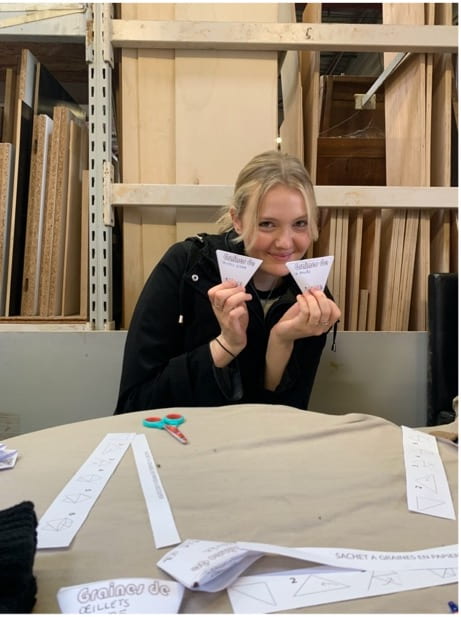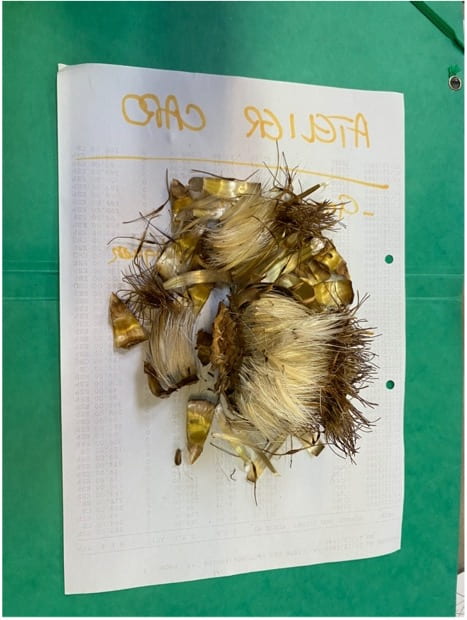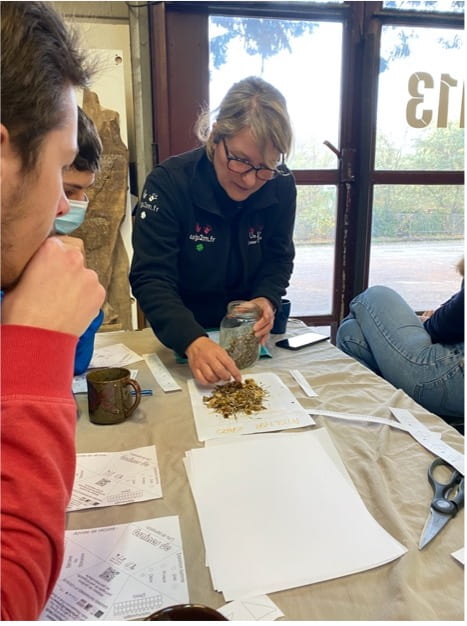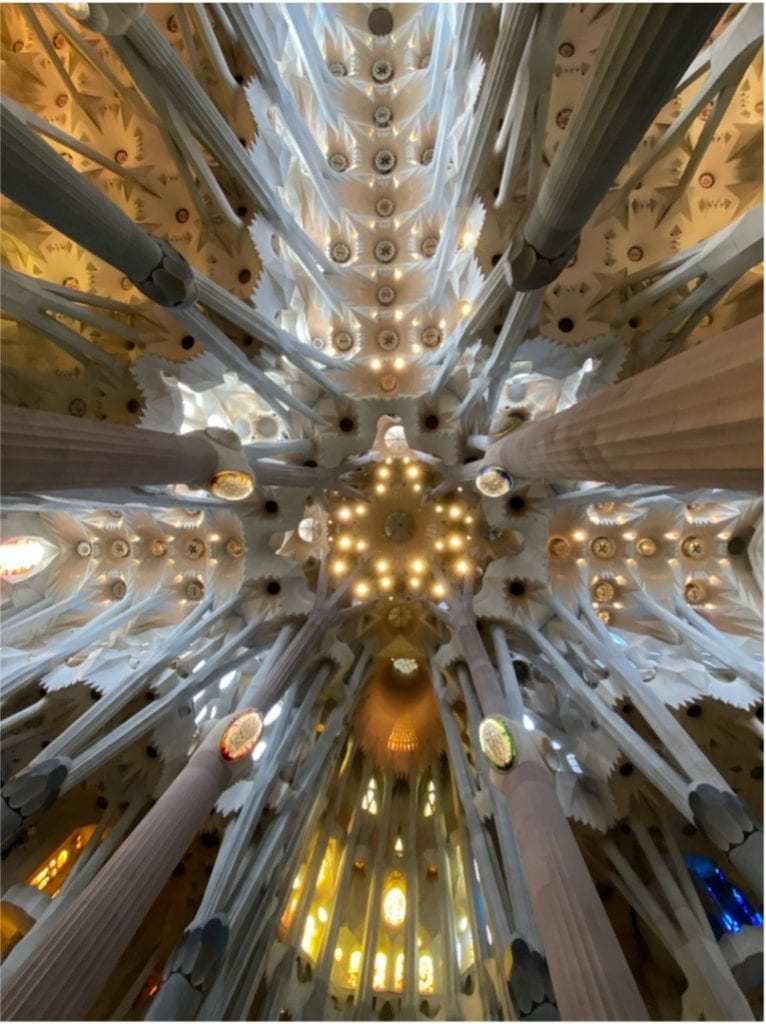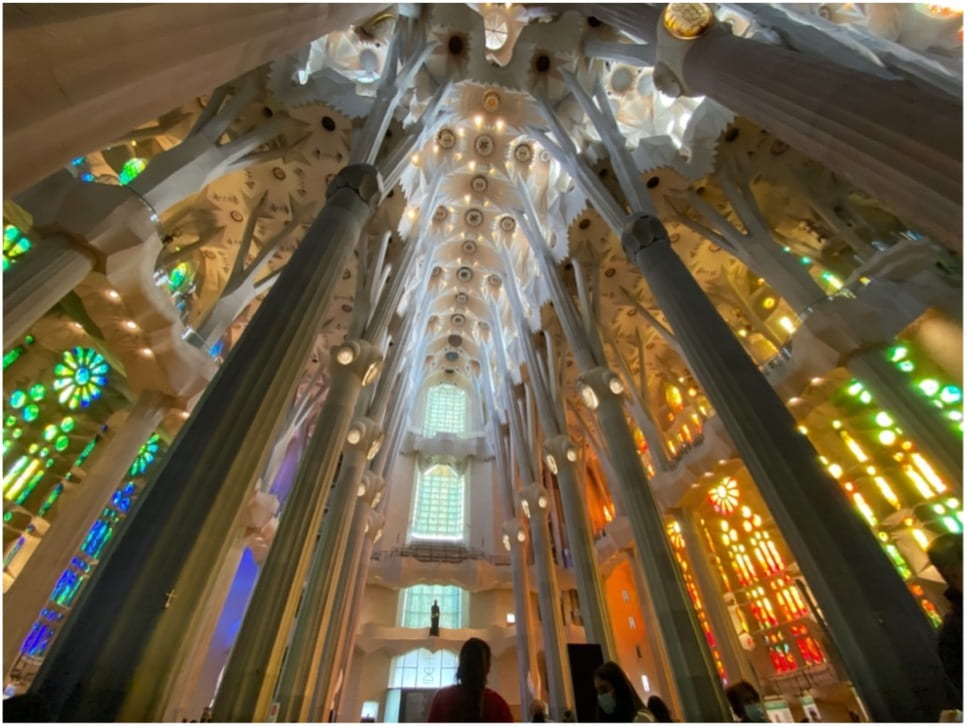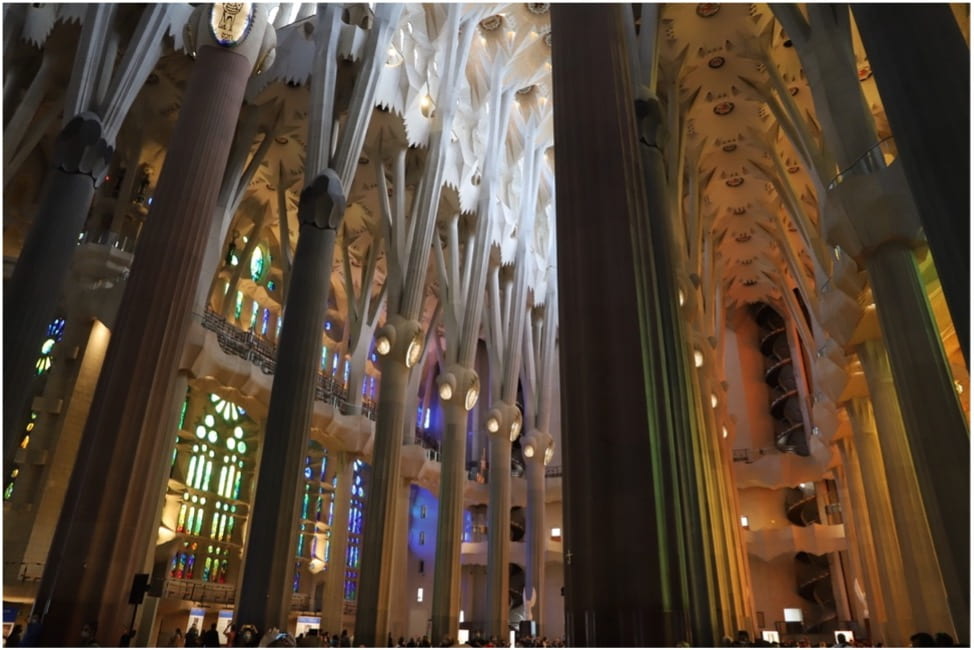Being at GTL with the SLS-France program gives us the opportunity to have a whirlwind of traveling and adventure, especially during our holiday breaks (one full week and a 4 day weekend, just like French people). We had plenty of ecological experiences along the way! It is super cool how the SLS-France program has given us the mindset to recognize environmental elements in every setting! Before I get into some of the marvelous things I saw during my travels, I must tell you all about my first day volunteering at Un Jardin pour 2 Mains, as it was a long-awaited visit. This organization sparked my interest because of their unique shared space with artists, carpenters, and even a Youtuber and their experimentation with new gardening techniques. We have had a beautiful fall season here in Metz, but winter has begun to set in. The morning Megan, Tanner, Ngari, Nate, John, and I went to the garden was particularly cold and dreary, so Nathalie (the organization’s founder) decided to do an activity inside. She gave us each a worksheet and began to show us two different types of seeds la poirée (Swiss Chard) and Œillets d’Inde (carnations). We filled out the worksheets with all the information needed to grow the seeds successfully, and once we finished, we folded them into little pockets for some seeds of our very own to take home! In class, we recently watched the film, Solutions locales pour un désordre global (Think Global, Act Rural), which emphasized the power of seeds in a world overtaken by industrial agriculture. The film showed how many organic, small farmers take back their power by harvesting their own non-GMO seeds. Having this knowledge in mind as we sifted through seeds at Un Jardin pour 2 Mains gave me a whole new appreciation and excitement about the activity!
For the longer of our two breaks, a few friends and I decided to visit Italy! At one of our first stops, Milan, we were greeted with one of the city’s most impressive urban ecology projects as soon as we walked out of the train station. To our surprise, two of the most predominant buildings in the surrounding city were covered in plants so, of course, we had to investigate. Come to find out, the two buildings we saw are the Bosco Verticale (Vertical Forest) towers. After some curious research, I discovered that the two towers are residence buildings designed by architect Stefano Boeri. The two buildings combined are home to 21,000 plants which, to put into perspective, is equivalent to 30,000 square meters of forest¹. This fact blew my mind! After doing my term project on urban ecology, I was giddy at the fact that a building has been turned into a whole forest in the middle of a city. This building alone can generate oxygen, regulate climate, absorb carbon dioxide, and provide urban wildlife home, which is truly incredible. The thing I find the most genius is the space utilization. If someone had gone to the authorities in Milan and asked for 30,000 square meters of space in the city for a forest, they never would have gotten it, but in this form, it is simply another skyscraper. This innovative thinking is how we can create a sustainable future! The criticism of many towards sustainability is the fear of reshaping society as we know it. The Bosco Verticale is a perfect example of how creativity can rework something familiar into something that can help heal our cities, people, and the planet.
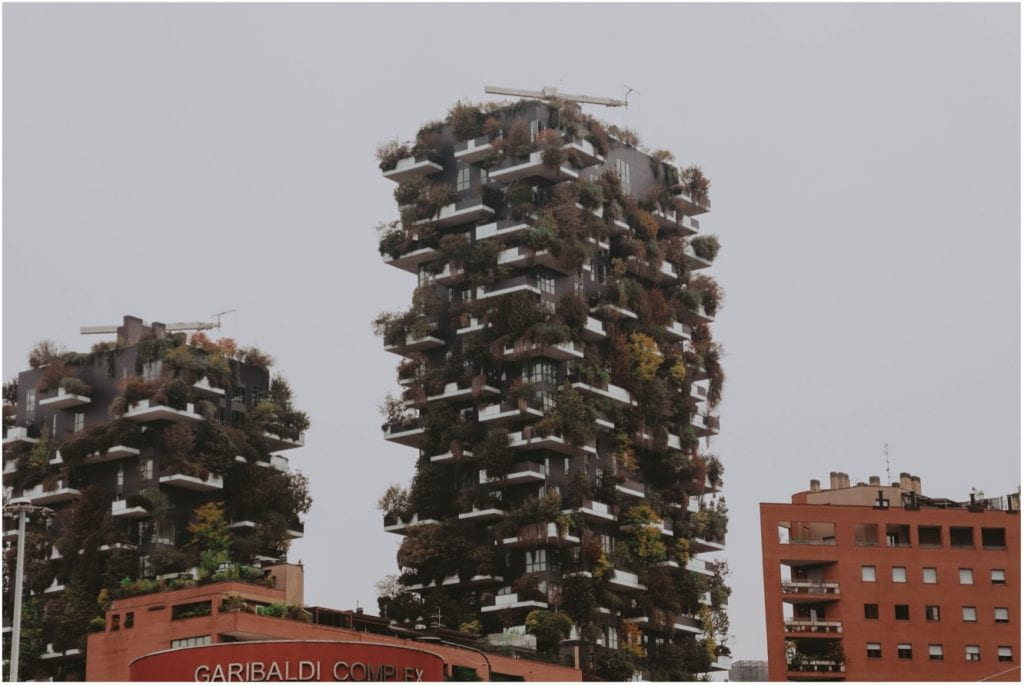
For our second break, I went with a few others to the beautifully colorful city of Barcelona, Spain. In our time there we visited the famous Sagrada Familia. This magnificent cathedral was designed by Antoni Gaudi, started in 1882, and is still being built today. I have always heard that this was one of the must-see cathedrals in Europe, but I wasn’t sure of what made it stand out until I walked through its grand doors. Gaudi was highly inspired by nature and often included it in his work. The Sagrada Familia is no exception. The interior of the church was designed to look, feel, and act as a forest. The structural support beams of the building are trunk-like columns that branch out towards the ceiling to support the massive towers. Each section of beams is made of different material and has different shapes to produce the look of diverse species of trees in a forest. The stained glass was also strategically positioned to paint the cathedral with different colors based on the sun’s position throughout the day. The idea that a spiritual place should mimic nature is a brilliantly simple idea that I wish more architects would utilize. I was overwhelmed by feelings of awe and peace, and I thought it was incredible how I genuinely felt as if I were standing in a forest. The Sagrada Familia is a remarkable tribute to and a reminder of the beauty that exists all around us, and I can now definitely agree that it is a must-see.
